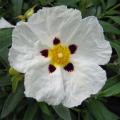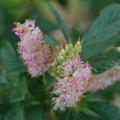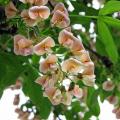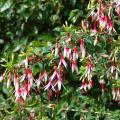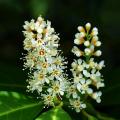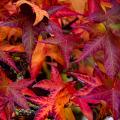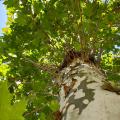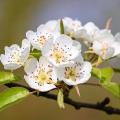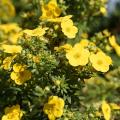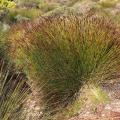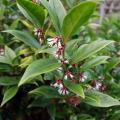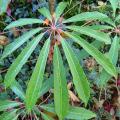Shipping country and language
Your country of residence may be:
Your country of residence is:
For a better user experience on our website, you can select:
Your shipping country:
Andorra
Austria
Belgium
Bulgaria
Canada
Chile
Croatia
Cyprus
Czechia
Denmark
Estonia
Finland
France
Germany
Greece
Hungary
Iceland
Ireland
Italy
Latvia
Lithuania
Luxembourg
Malta
Monaco
Netherlands
Poland
Portugal
Romania
Slovakia
Slovenia
Spain
Sweden
Switzerland
United Kingdom
We only deliver seed and bulb products to your country. If you add other products to your basket, they cannot be shipped.
Language:
French
German
Spanish
English
My Account
Hello
My wish lists
Plantfit
Log in / Register
Existing customer?
New customer?
Create an account to track your orders, access our customer service and, if you wish, make the most of our upcoming offers.
Brugmansia - Angel's Trumpet
Would this plant suit my garden? Set up your Plantfit profile →
Available in 1 sizes
Available in 1 sizes
Brugmansias, known as angel's trumpets or trumpet of judgment, are spectacular bushes with exotic charm. The most well-known species is Brugmansia arborea, a magnificent tropical young plant with white pendulous trumpet-shaped flowers that exude a sweet fragrance, especially in the evening. Among the most beautiful varieties, Brugmansia sanguinea stands out with its orange flowers, often edged in yellow. Native to the mountainous regions of South America, this variety prefers cooler conditions and shows particular resistance to diseases. Also worth mentioning is the Brugmansia suaveolens, native to Brazil, renowned for the fragrance of its white or pale yellow flowers. The Brugmansia x candida is another highly sought-after variety, with its large double or triple flowers in various colours, ranging from pure white to bright yellow, and sometimes even orange. This hybrid species is particularly appreciated for its long flowering period, extending from spring to autumn.
Brugmansias are not Daturas, although they belong to the same family of Solanaceae and are occasionally confused. The main difference lies in the size and orientation of the flowers: Brugmansias have pendulous flowers, while Daturas have upright flowers.
Brugmansias thrive in rich, well-drained soil, in full sun or partial shade. They require regular watering, especially during the growth period, and protection against strong winds. Sensitive to frost, they should be overwintered in a bright veranda or room that is not too warm.
For more information, also check out our comprehensive guide "Datura and Brugmansia: sowing, planting, and maintenance"
Haven't found what you were looking for?
The flowering period indicated on our website applies to countries and regions located in USDA zone 8 (France, the United Kingdom, Ireland, the Netherlands, etc.)
It will vary according to where you live:
- In zones 9 to 10 (Italy, Spain, Greece, etc.), flowering will occur about 2 to 4 weeks earlier.
- In zones 6 to 7 (Germany, Poland, Slovenia, and lower mountainous regions), flowering will be delayed by 2 to 3 weeks.
- In zone 5 (Central Europe, Scandinavia), blooming will be delayed by 3 to 5 weeks.
In temperate climates, pruning of spring-flowering shrubs (forsythia, spireas, etc.) should be done just after flowering.
Pruning of summer-flowering shrubs (Indian Lilac, Perovskia, etc.) can be done in winter or spring.
In cold regions as well as with frost-sensitive plants, avoid pruning too early when severe frosts may still occur.
The planting period indicated on our website applies to countries and regions located in USDA zone 8 (France, United Kingdom, Ireland, Netherlands).
It will vary according to where you live:
- In Mediterranean zones (Marseille, Madrid, Milan, etc.), autumn and winter are the best planting periods.
- In continental zones (Strasbourg, Munich, Vienna, etc.), delay planting by 2 to 3 weeks in spring and bring it forward by 2 to 4 weeks in autumn.
- In mountainous regions (the Alps, Pyrenees, Carpathians, etc.), it is best to plant in late spring (May-June) or late summer (August-September).
The harvesting period indicated on our website applies to countries and regions in USDA zone 8 (France, England, Ireland, the Netherlands).
In colder areas (Scandinavia, Poland, Austria...) fruit and vegetable harvests are likely to be delayed by 3-4 weeks.
In warmer areas (Italy, Spain, Greece, etc.), harvesting will probably take place earlier, depending on weather conditions.
The sowing periods indicated on our website apply to countries and regions within USDA Zone 8 (France, UK, Ireland, Netherlands).
In colder areas (Scandinavia, Poland, Austria...), delay any outdoor sowing by 3-4 weeks, or sow under glass.
In warmer climes (Italy, Spain, Greece, etc.), bring outdoor sowing forward by a few weeks.





















































